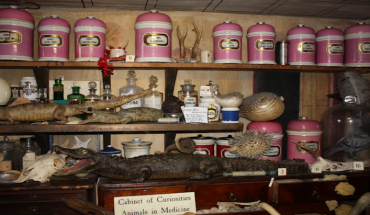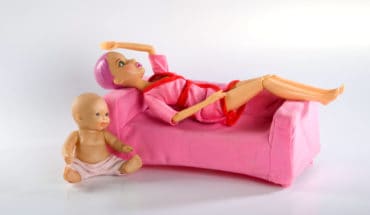Suffocation and strangulation (along with choking and drowning) account for the majority of accidents resulting in fatalities in the under 5s.
For strangulation, the most common causes are blind cords, drawstring bags, necklaces, cot bumpers and clothing becoming caught in something.
RoSPA statistics show that at least 33 young children across the UK have died because of looped cords on blinds since 2001 – that’s one or two children each year – and there will be many more near misses.
“It can take just 15 seconds for a toddler to lose consciousness if they get tangled in a blind cord. Death can occur in just two or three minutes.” Child Accident Prevention Trust
Toddlers are inquisitive climbers and explorers. That is to say, they can easily reach a blind cord and may put it round their neck as a necklace. In addition, a looped cord or chain which dangles down can entangle them.
If their cot or bed is near a window that has a hanging blind cord, or if a bag is hanging over the end of their bed, or even if their cot has tie on bumpers – all these can be potential dangers for them.
Even if cords or chains do seem to be well out of the way, children can often still reach them. Toddlers can climb up on chairs, beds, cots, plant pots and tables. As a result they will suddenly reach places they hadn’t the day or week before.
Potential hazards in the home
- plastic bags
- nappy sacks
- burst or unfilled balloons
- blind cords
Safety tips
There are lots of things families can do to minimise the risks to young children. Here are some essential tips to avoid your child strangling themselves:
Firstly, fit a tensioner to chains or a cleat hook to tie blind cords up far out of young children’s reach and use it every time you open or close the blinds.
Secondly, make sure the cords on the back of Roman blinds are connected with a safety device that breaks away under pressure.
Move cots, beds, plant pots, highchairs and playpens away from looped blind cords and chains. in addition, look objectively and see if you can see any way that they could get to the cords which could pose a risk.
If at all possible, choose blinds without operating cords or chains. This is a far safer option.
Check all rooms of the house for looped blind cords or chains.
Never hang anything on the side of a cot, or within reach of the child. Small children should not wear necklaces that could become caught or tangled. Furthermore, do not use cot bumpers.
Nappy Sacs
The key culprits for suffocation are nappy sacs and plastic bags as babies are unable to remove them if they land on their faces. However, pets, cushions, duvets and pillows can also pose a risk.
Nappy sacks can be particularly dangerous as they don’t rustle in the same way that plastic bags do, making them harder to hear if a baby/young child gets hold of one.
Because of this, make sure that nappy sacks are not stored in a place where your baby or toddler could reach it.
Never leave your baby alone with a pet or toddler, even for a minute. In addition, ensure nappy sacs are always kept well out of reach of any children. Moreover, babies do not need pillows.
Safe sleeping
To reduce the risk of suffocation or strangulation while your baby is sleeping, make sure to follow safe sleep guidelines.
- babies should be placed to sleep on their back
- they should have their feet touching the end of the crib or Moses basket
- make sure the mattress they are sleeping on is firm, flat, well-fitting and clean
- do not use duvets, quilts, baby nests, wedges, bedding rolls or pillows
For more information about safe sleep follow the link by clicking here.
Immediate First Aid after Strangulation
If you find your child has suffocated or been strangled, immediately remove the offending object. For example, for blind cord strangulation, it may be easiest to use scissors. Check if they are conscious and check for breathing. If they are not breathing, begin CPR immediately. To learn how to carry out CPR on a baby, click here.
We cover CPR and care of an unconscious baby and child on all our practical first aid courses. Please contact us and book in on one of our practical or online first aid courses, to ensure you have the skills to help in an emergency.
- What is a seizure? - 13th March 2025
- Febrile Convulsions and Seizures in Children - 13th March 2025
- Why women are less likely to receive CPR or survive cardiac arrest - 6th March 2025








